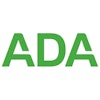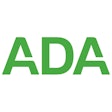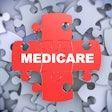
While the Patient Protection and Affordable Care Act (ACA) mandate for essential health benefits (EHBs) has provided coverage for millions of Americans, it has also resulted in a state-by-state patchwork of coverage for children and adolescents that has significant exclusions, particularly for children with developmental disabilities and other special healthcare needs. The first comprehensive analysis of EHBs is discussed in the journal Health Affairs (December 2014, Vol. 33:12, pp. 2136-2143).
 Aimee Grace, MD, MPH. Image courtesy of the Children's National Health System.
Aimee Grace, MD, MPH. Image courtesy of the Children's National Health System."The Affordable Care Act offers great promise for kids, but we are concerned that its intended benefits are not fully realized for children," said lead author Aimee Grace, MD, MPH, in a statement. Dr. Grace is a pediatrician and fellow at the Children's National Health System.
The ACA establishes 10 EHBs as the coverage standard for health plans sold in the individual and small-group markets for all states and the District of Columbia, including the health insurance marketplaces. "Pediatric services" is one of the required classes of coverage under the ACA.
According to healthcare.gov, the 10 essential benefits are listed below:
- Ambulatory patient services
- Emergency services
- Hospitalization
- Maternity and newborn care
- Mental health and substance use disorder services, including behavioral health treatment
- Prescription drugs
- Rehabilitative and habilitative services and devices
- Laboratory services
- Preventive and wellness services and chronic disease management
- Pediatric services, including oral and vision care
While the ACA gave U.S. Health and Human Services (HHS) officials the ability to define a pediatric benefit standard at the national level, HHS chose instead a state-by-state benchmark plan approach, which offers greater latitude to both states and payors. The researchers found that this approach has led to great variation among states regarding coverage of pediatric services.
The researchers sought to understand which pediatric services are covered and which are excluded by plans in the health insurance marketplaces. As there is currently no national pediatric benefit standard, the analysis compared benchmark plans on a state-by-state level.
Children up to age 19 are the only group included in the law's EHBs. However, other than oral health and vision care, neither the act nor the regulations for implementing it define what these services should be, the study authors noted.
What makes this study important is that it presents evidence on the types of exclusionary practices that limit the effectiveness of coverage for those who are insured through these health plans.
For example, 25 states specifically cover treatments for congenital defects, and 24 specifically include coverage for both autism spectrum disorder (at least in part) and hearing aids. There is also great variation among states regarding exclusion of certain pediatric services; for example, 13 states specifically exclude services for children with learning disabilities, and 10 states exclude speech therapy for developmental delays, stuttering, or both.
The analysis suggests four policy steps:
Pediatric treatment limits and exclusions, particularly exclusions based on mental retardation, mental disability, or other developmental conditions, should be barred.
The concept of "medical necessity" should be incorporated into the defined pediatric benefit. Medical necessity should include not only the clinical utility and appropriateness of a covered service, but also whether the service is appropriate in the pediatric developmental health context.
The EHB standard for pediatric services should be revised to address both covered services, particularly for children with special needs, and actuarial value (the percentage that the average person can expect the plan to cover). The researchers suggest keeping with the current Children's Health Insurance Program (CHIP) practice of an actuarial value of 90% for qualified health plans sold in the marketplaces to reduce the burden of high deductibles, coinsurance, and other forms of cost sharing for families with children.
The use of CHIP plans as a benchmark plan for pediatric services should be permitted.
HHS made a commitment to review its "benchmark plan" approach for the 2016 plan year, the authors wrote. At that time, the agency could define a pediatric benefit standard at the national level.
Also, the authors note that establishing a benefit standard has important implications for the 8 million children who currently receive their health insurance coverage through CHIP.
If this funding were not extended, many of these children would enter the marketplaces for their insurance coverage, the study authors noted. For these children, as well as the children already covered by plans in the marketplaces, the appropriateness of the EHB standard for children is one of the most important issues in child health policy today.
"With congressional debate expected about whether to extend funding for CHIP beyond fiscal year 2015, how well the pediatric services element of the essential health benefits standard addresses the needs of children will be an important factor to consider," noted study co-author Kathleen Noonan, co-director at the Children's Hospital of Philadelphia and faculty member at the University of Pennsylvania's Master of Public Health Program.
The study was done by researchers at the Children's Hospital of Philadelphia; Children's National Health System in Washington, DC; Johns Hopkins Bayview Medical Center; and the Milken Institute School of Public Health at the George Washington University.



















